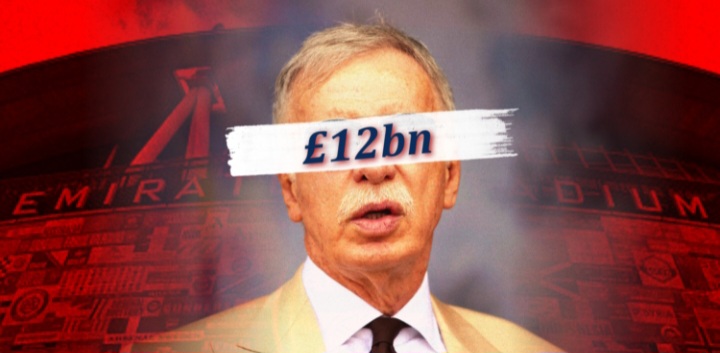Arsenal are one of the biggest recipients of the Premier League’s TV money, which under Stan Kroenke’s largely self-funding financial model helps fund their activity in the transfer market.
The Gunners are, however, less reliant than they once were on media cash. Last season, Arsenal generated £262m from TV income, with around two-thirds of that figure coming from the Premier League pot.
That was out of total turnover of just shy of £614m. Increasingly, commercial and matchday are playing a bigger part. Through the turnstiles, Arsenal are expected to announce Premier League record revenue for 2024-25. Commercially, they were lagging behind their peer group until recently, but there has been a revival under chief commercial officer Juliet Slot.
If Stan Kroenke is to ever make a significant return on his investment – which, to date, is around £1.1bn – then he needs matchday and commercial income to carry on accelerating and, crucially, ensure that they are growing faster than costs.
That’s not easy in a financial ecosystem where most clubs are drunk on the ceaseless inflation of the Premier League’s domestic and international TV deals, leading to escalating transfer costs and agents demanding ever and ever increasing wages for their players.
With the UK deal rolling over at an increased rate from the start of 2025-26, Arsenal will get an outsized cut of a total package worth in excess of £12bn over the next four-year cycle.
However, there are many within the game who are sceptical that the gravy train is about to halt.
In the last round of negotiations with Sky Sports and TNT, the Premier League had to simply sell more matches to the broadcasters to increase the value of the deal.
On a per-game basis, the deal is actually down on the previous iteration. As a result, the Premier League are looking for new solutions to give Sky and TNT more value.
Among those is an idea championed by Arsenal’s CCO Slot in her role on the Premier League’s Rights, Access and Facilities Framework: to allow the cameras far greater access to training complexes in North London and beyond.
The latest enhanced access at the Sobha Realty Training Centre will see Arsenal players don body-worn cameras for selected training sessions at least once per season, borrowing somewhat from the referee cameras currently being pioneered at the Club World Cup in the United States.
However, football finance expert Kieran Maguire isn’t confident this is going to unlock any real value.
“The Premier League are looking for something more to offer their broadcast partners,” he said in exclusive conversation with soccerhuz.com.
“They increased the number of matches they sell, but the new domestic TV deal is only worth four per cent more than the previous iteration.”
“So, the idea is to use technology to innovate and give some more value to the viewer, but I don’t think it is going to be the next big thing.
“We’ve seen with clubs who have gone down the route of having their own dedicated TV channels, such as Manchester United and Chelsea, they don’t get that much traction.
“Given the rise in alternative broadcasting through Arsenal Fan TV and other fan channels, I think people will gravitate towards those.
“Anything that comes out from behind-the-scenes cameras from the training ground at Arsenal or anywhere else will be very highly polished – and I think people want something a little bit more authentic or ‘street’, for want of a better phrase.
“A lot of the content they produce at the moment is very dull.”
Increasingly, many clubs think that a Premier League in-house streaming platform could be the way forward, likely with an intervening period when the production is handled by a third party.
For Arsenal, the ideal situation would be to sell their own rights direct to the consumer, which was one of the provisions of the ill-fated European Super League in April 2021.
Kroenke personally helped engineer that plot.

